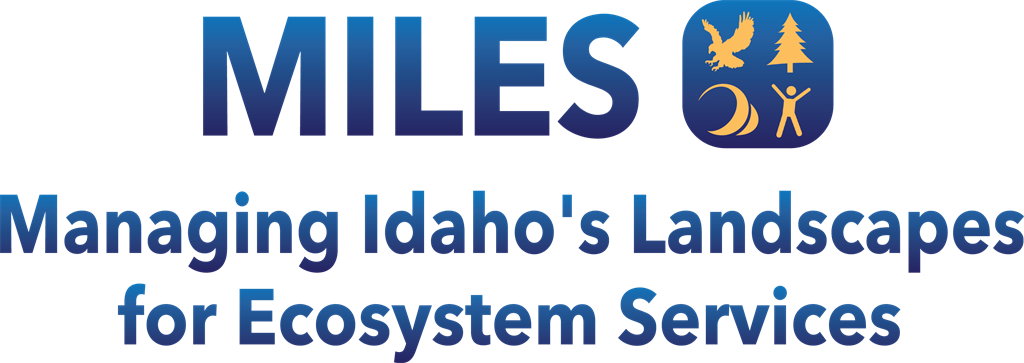Summary & Purpose
Outdoor recreation, as the intersection between physical exercise and nature, provides a multitude of psychological and physiological benefits to human well-being. Though many studies have reported qualitative stress reduction from outdoor recreation, few have focused on quantitative measurements of stress across recreational activity types, intrapersonal differences, and environmental variables. To determine whether outdoor recreation affects physiology, we collected 190 paired salivary cortisol and testosterone samples and 157 surveys from 88 hikers, 81 mountain bikers, and 44 off-highway vehicle (OHV) motorists. After recreation, cortisol concentrations were significantly reduced in hikers and OHV motorists, but cortisol and testosterone concentrations increased in mountain bikers. These three recreational activity types also significantly differed in motivation and wildlife observations, which could be additional mechanisms of physiological change. Out of all three recreation types, hikers were most motivated by environmental variables. To test how the environment could be affecting hikers, we evaluated the impact of landscape aesthetic perceptions and land cover types on hiker spatial movement and stress relief. Using data from 58 GPS tracks, we found that salivary cortisol was significantly reduced when hikers walked through riparian areas. Hiker cortisol also decreased after recreating in areas they perceived as aesthetically pleasing. Aesthetic quality influenced hiker spatial movement, with hikers choosing to recreate in high-aesthetic high-wildlife observance riparian areas. Though hiker movement and stress were not related to the intensity of visitor use, wildlife observations decreased with greater recreational utilization. Hikers, however, did not perceive any negative impact from their recreational activities. Despite the different forms of recreational activity, outdoor recreation has potential to benefit human well-being. In addition, managing recreational land for ecosystem health and wildlife may enhance well-being benefits, as well as serving a role in the conservation of wild lands.
Date of Publication or Submission
11-15-2018
DOI
https://doi.org/10.18122/MILES/26/boisestate
Funding Citation
This publication was made possible by the National Science Foundation (NSF) Idaho Established Program to Stimulate Competitive Research (EPSCoR) under award number IIA-1301792
Single Dataset or Series?
Series
Data Format
*.csv, *.png, *.docx files zipped into a single *.zip
Data Attributes
Data headings can be found in the file labeled "Variables." Raw data include salivary hormone data, GPS data, camera data and survey data. Saliva samples were collected via the passive drool method in cyrovials following the protocol from Salimetrics and processed using the Salimetrics Cortisol. Enzyme Immunoassay kit and the Salimetrics Testosterone Enzyme Immunoassay kit. Assay plates were read using Gen5 software and Biotek EL800 Plate Reader. Final cortisol and testosterone concentrations were calculated from optical densities using a standard curve and the elisaanalysis interface. GPS data was collected using portable GPS receivers (Globalsat dg-100). GPS tracks were converted from KML files and processed using ESRI 10.2 ArcGIS. Land cover per GPS track were calculated using a 100m buffer polygon surrounding each individual track. The area of each land cover an individual traveled through was then assessed and calculated as a proportion. Camera data was spatially linked using GPS tracks. Survey data was collected at the end of each recreational trip. The data set is limited to Boise, Idaho and the Murphy subregion of the Owyhee Front Management system in southwest Idaho. A site map is included in the download.
Time Period
March 24, 2017 - May 18, 2017
Privacy and Confidentiality Statement
We are explicitly compliant with federal and state laws surrounding data privacy including the protection of personal financial information through the Gramm-Leach-Bliley Act, personal medical information through HIPAA, HITECH and other regulations. All human subject data (e.g., surveys) has been collected and managed only by personnel with adequate human subject protection certification.
Use Restrictions
Data will be provided to all who agree to appropriately acknowledge the National Science Foundation (NSF), Idaho EPSCoR and the individual investigators responsible for the data set. By downloading these data and using them to produce further analysis and/or products, users agree to appropriately acknowledge the National Science Foundation (NSF), Idaho EPSCoR and the individual investigators responsible for the data set. Use constraints: Acceptable uses of data provided by Idaho EPSCoR include any academic, research, educational, governmental, recreational, or other not-for-profit activities. Any use of data provided by the Idaho EPSCoR must acknowledge Idaho EPSCoR and the funding source(s) that contributed to the collection of the data. Users are expected to inform the Idaho EPSCoR Office and the PI(s) responsible for the data of any work or publications based on data provided.
Disclaimer of Warranty
BOISE STATE UNIVERSITY MAKES NO REPRESENTATIONS ABOUT THE SUITABILITY OF THE INFORMATION CONTAINED IN OR PROVIDED AS PART OF THE SYSTEM FOR ANY PURPOSE. ALL SUCH INFORMATION IS PROVIDED "AS IS" WITHOUT WARRANTY OF ANY KIND. BOISE STATE UNIVERSITY HEREBY DISCLAIMS ALL WARRANTIES AND CONDITIONS WITH REGARD TO THIS INFORMATION, INCLUDING ALL WARRANTIES AND CONDITIONS OF MERCHANTABILITY, WHETHER EXPRESS, IMPLIED OR STATUTORY, FITNESS FOR A PARTICULAR PURPOSE, TITLE AND NON-INFRINGEMENT.
IN NO EVENT SHALL BOISE STATE UNIVERSITY BE LIABLE FOR ANY SPECIAL, INDIRECT OR CONSEQUENTIAL DAMAGES OR ANY DAMAGES WHATSOEVER RESULTING FROM LOSS OF USE, DATA OR PROFITS, WHETHER IN AN ACTION OF CONTRACT, NEGLIGENCE OR OTHER TORTIOUS ACTION, ARISING OUT OF OR IN CONNECTION WITH THE USE OR PERFORMANCE OF INFORMATION AVAILABLE FROM THE SYSTEM.
THE INFORMATION PROVIDED BY THE SYSTEM COULD INCLUDE TECHNICAL INACCURACIES OR TYPOGRAPHICAL ERRORS. CHANGES ARE PERIODICALLY ADDED TO THE INFORMATION HEREIN. COMPANY AND/OR ITS RESPECTIVE SUPPLIERS MAY MAKE IMPROVEMENTS AND/OR CHANGES IN THE PRODUCT(S) AND/OR THE PROGRAM(S) DESCRIBED HEREIN AT ANY TIME, WITH OR WITHOUT NOTICE TO YOU.
BOISE STATE UNIVERSITY DOES NOT MAKE ANY ASSURANCES WITH REGARD TO THE ACCURACY OF THE RESULTS OR OUTPUT THAT DERIVES FROM USE OF THE SYSTEM.
Recommended Citation
Opdahl, Ellie; Demps, Kathryn; and Heath, Julie. (2018). A Human-Environment Systems Approach to Outdoor Recreation, Human Biological Stress, and Landscape Aesthetics [Data set]. Retrieved from https://doi.org/10.18122/MILES/26/boisestate



